

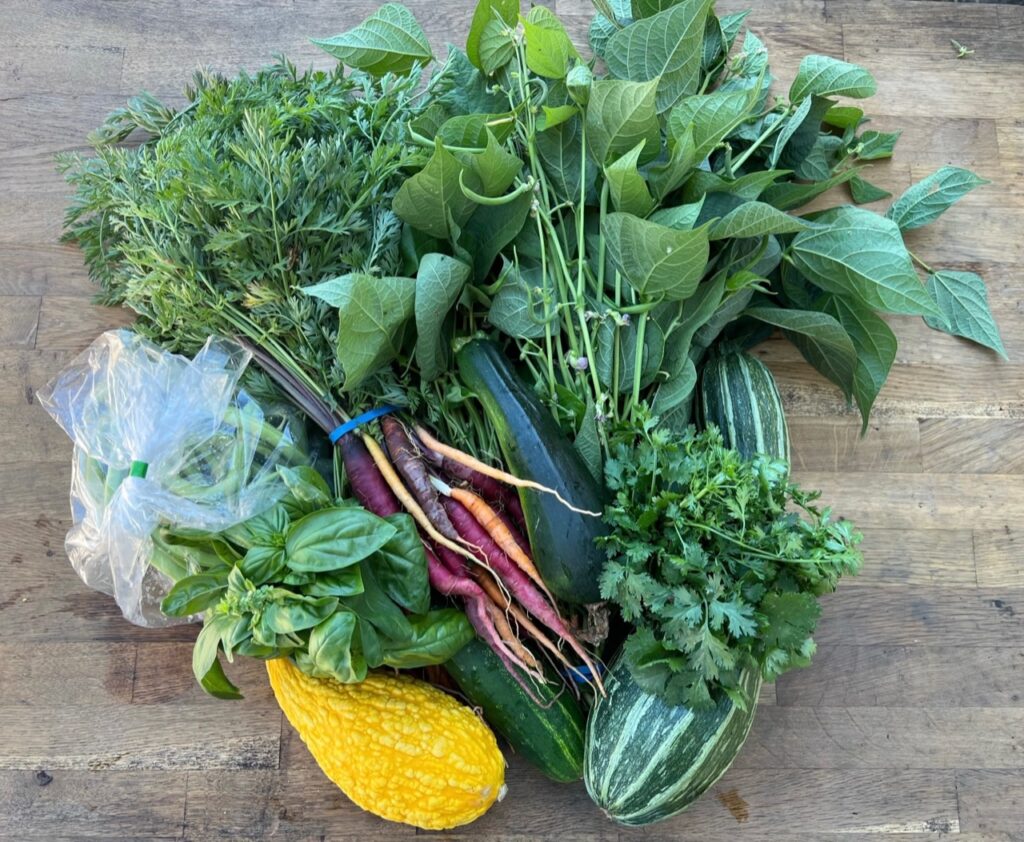
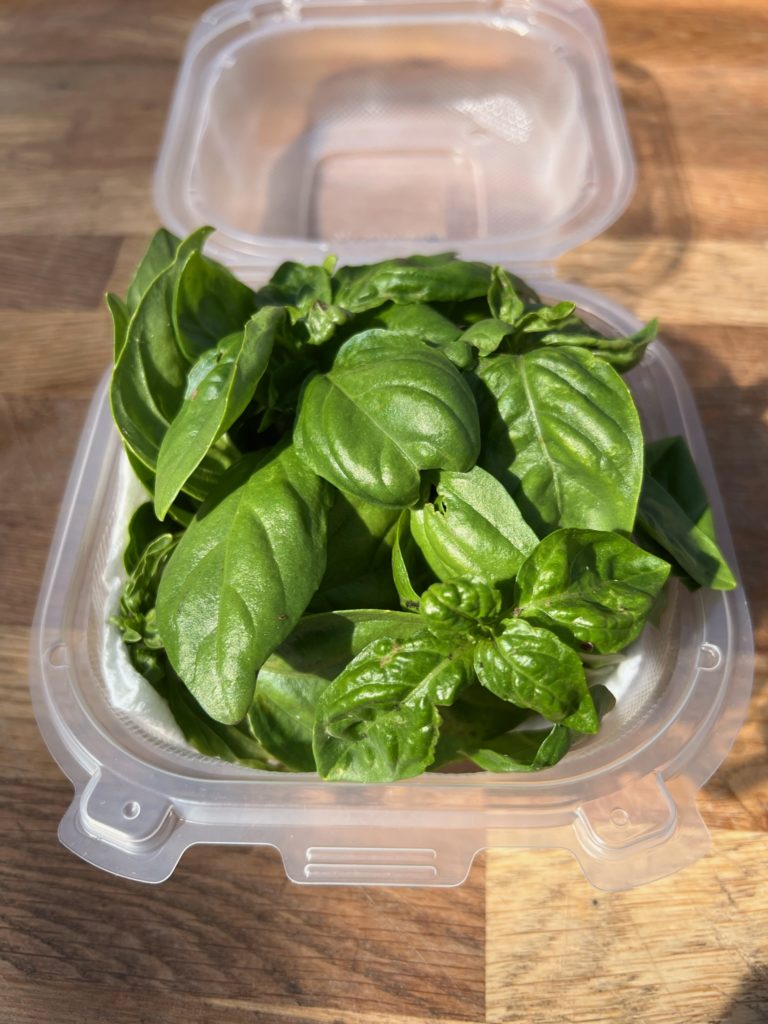
Basil is a highly aromatic herb with a distinct and vibrant flavor. Its leaves are glossy and bright green or purple, and they have a slightly sweet and peppery taste with hints of mint and cloves. Basil is known for its strong fragrance, which is both herbaceous and slightly floral. The scent of basil is often associated with Mediterranean and Italian cuisine, where it is widely used.
In a glass of water: Trim the stems and any leaves that would be under water. Use them first. Place the basil in a glass of water, just like you would with flowers. Store the glass in the refrigerator for up to a week or keep near a window. If you leave it out, you can use the leaves and roots will grow. Change the water every few days. Soon you can plant in a pot and have your own basil plant!
Refrigerator: place basil in a plastic bag with a paper towel or cloth to maintain moisture while allowing airflow.
Rinse. Remove leaves from stems. Chop or use the whole leaf. Eat raw or cooked.

Carrots are vibrant root vegetables known for their distinct crunchy texture and sweet, earthy flavor. They come in various colors, including orange, purple, yellow, and white. Carrots have a satisfyingly crisp bite and a subtly sweet taste that is enhanced when cooked. Whether enjoyed raw as a snack, grated into salads, roasted to bring out their natural sweetness, or used as a flavorful ingredient in soups, stews, and stir-fries, carrots provide a versatile and nutritious addition to a wide range of dishes.
We love growing every color of carrot! Atomic reds might be our favorite. They are the red carrots. Which color is your favorite?
Keep in the fridge. If you plan on storing them longer than a week, remove the greens and the carrots will stay crisp.
Rinse. The whole carrot is edible, including the leaves and root. Carrots can be enjoyed raw or cooked. If the leaves start to wilt, you can revive them by soaking them in ice water for a few minutes, then pat them dry and use as desired.
Freezing: Peel and slice or chop the carrots into desired sizes. Blanch them by briefly boiling in water and then plunging them into ice water to stop the cooking process. Drain well and place the blanched carrots in freezer-safe bags or containers. Label and date them before placing them in the freezer. Frozen carrots can be used in cooked dishes such as soups, stews, and stir-fries.
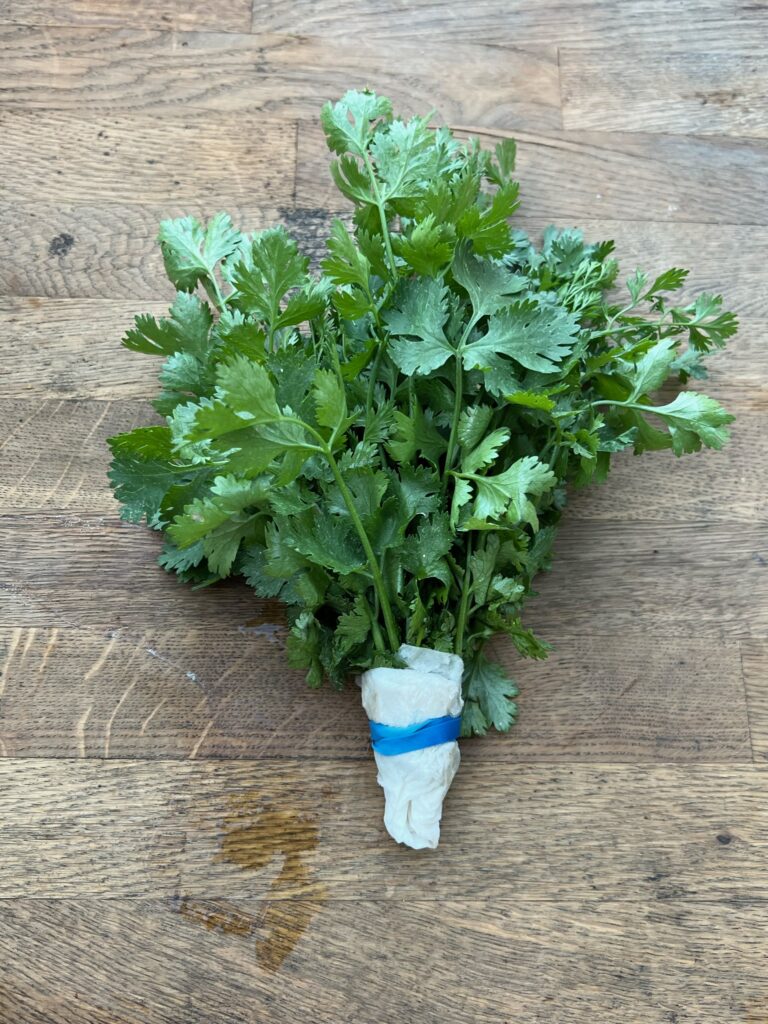
Cilantro, also known as coriander or Chinese parsley, is a pungent and herbaceous leafy herb that is widely used in various cuisines around the world. It features delicate, feather-like leaves with a vibrant green color. Cilantro possesses a distinctive flavor profile characterized by a fresh and citrusy taste with hints of sweetness and a subtle peppery undertone. Its aroma is reminiscent of a blend of parsley, citrus, and earthy notes. Cilantro is a versatile herb that adds a bright and refreshing element to dishes such as salsas, salads, curries, soups, and marinades. It is particularly renowned for its presence in Mexican, Indian, Thai, and Middle Eastern cuisines.
In a glass of water: Trim the stems and any leaves that would be under water. Use them first. Place the cilantro in a glass of water, just like you would with flowers. Store the glass in the refrigerator for up to a week or keep near a window.
Refrigerator: Place cilantro in a plastic bag with a paper towel or cloth to maintain moisture while allowing airflow.
Rinse. Remove leaves from stems. Chop or use the whole leaf. Eat raw or cooked.
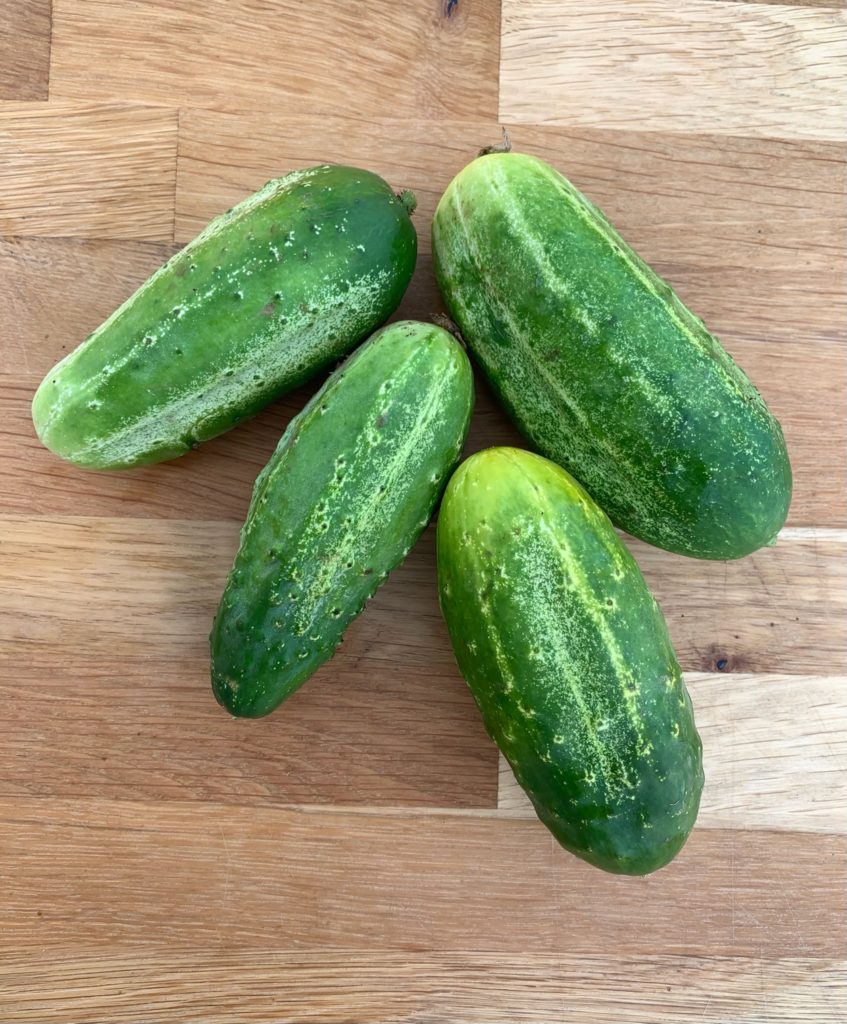
Cucumbers are a crisp and refreshing vegetable with a mild, subtly sweet flavor. They have a high water content, which gives them a hydrating and cooling quality. The flesh of cucumbers is pale green and juicy, with a crisp texture. They are commonly enjoyed fresh in salads, sandwiches, and wraps, or sliced as a refreshing snack.
Please refrigerate.
Rinse. Eat raw or cooked.
Pickling: To make refrigerator pickled cucumbers, start by washing and thinly slicing the cucumbers. Place the cucumber slices in a clean, sterilized jar or container. In a separate bowl, combine equal parts of water and vinegar (such as white vinegar or apple cider vinegar) along with salt and sugar to taste. Stir until the salt and sugar dissolve completely. You can also add spices like dill, garlic, mustard seeds, or red pepper flakes for extra flavor. Pour the vinegar mixture over the cucumber slices, making sure they are fully submerged. Place a lid or cover on the jar and refrigerate for at least 24 hours to allow the flavors to develop. The pickled cucumbers will keep well in the refrigerator for up to a few weeks, and they can be enjoyed as a tangy and refreshing snack or used as a topping for sandwiches, salads, or tacos.
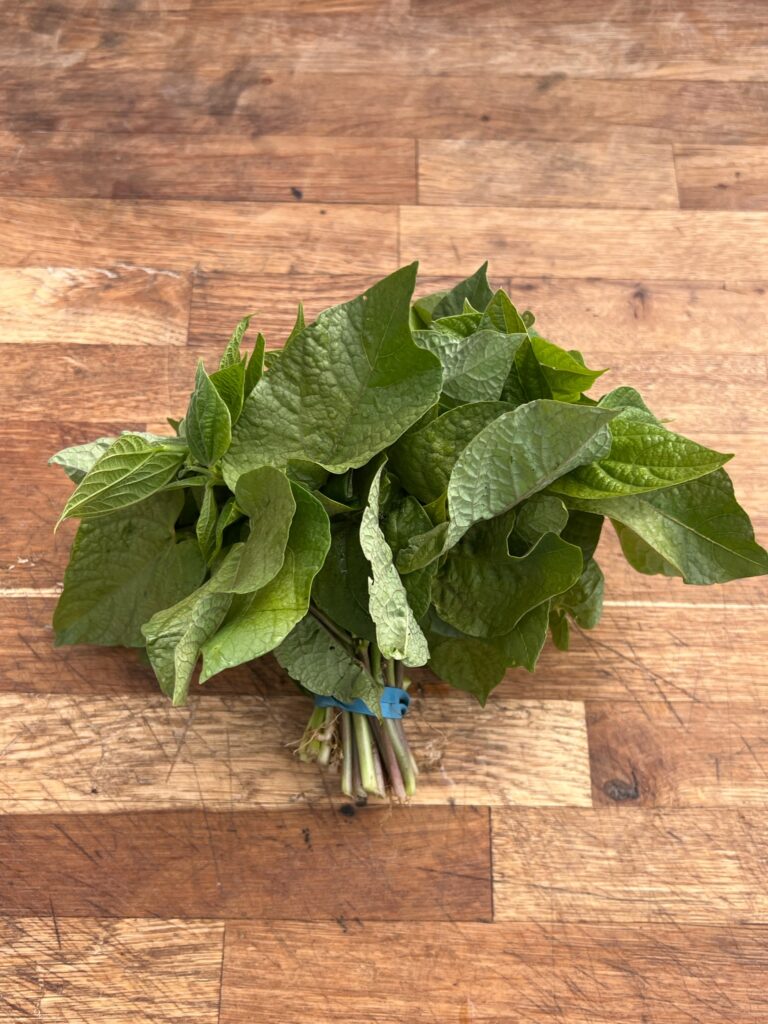
Green bean leaves have a mild and slightly grassy flavor with a hint of nuttiness. The taste is often compared to that of spinach or other leafy greens. The leaves have a tender texture, especially when young, and they can be slightly chewy when cooked. Bean leaves can be consumed raw in salads or used in cooked dishes, such as stir-fries, soups, or stews. They absorb flavors well from other ingredients and seasonings, making them a versatile addition to various culinary preparations.
Rinse. Remove leaves from stems, chop or add whole leaves. Eat raw or cooked.
It's best to use it within a few days for optimal flavor. To store it, place unwashed leaves in a perforated plastic bag or a container lined with a dry paper towel to absorb excess moisture. Seal the bag or container loosely to allow for some airflow. Store the bag in the refrigerator's crisper drawer, where it will stay fresh for a few days.
Freezing: strip the leaves from the stems, and start by blanching them. Bring a large pot of water to a boil and prepare an ice bath. Submerge the leaves in the boiling water for about 1 minute, then quickly transfer them to the ice bath to cool rapidly. Drain the leaves thoroughly and pat them dry. Arrange the blanched and dried leaves in a single layer on a baking sheet and freeze until firm. Transfer the frozen leaves to airtight freezer bags, removing as much air as possible, and seal. Label the bags with the date and store in the freezer for up to 6 to 8 months. Thaw the frozen leaves in the refrigerator before using them in cooked dishes.
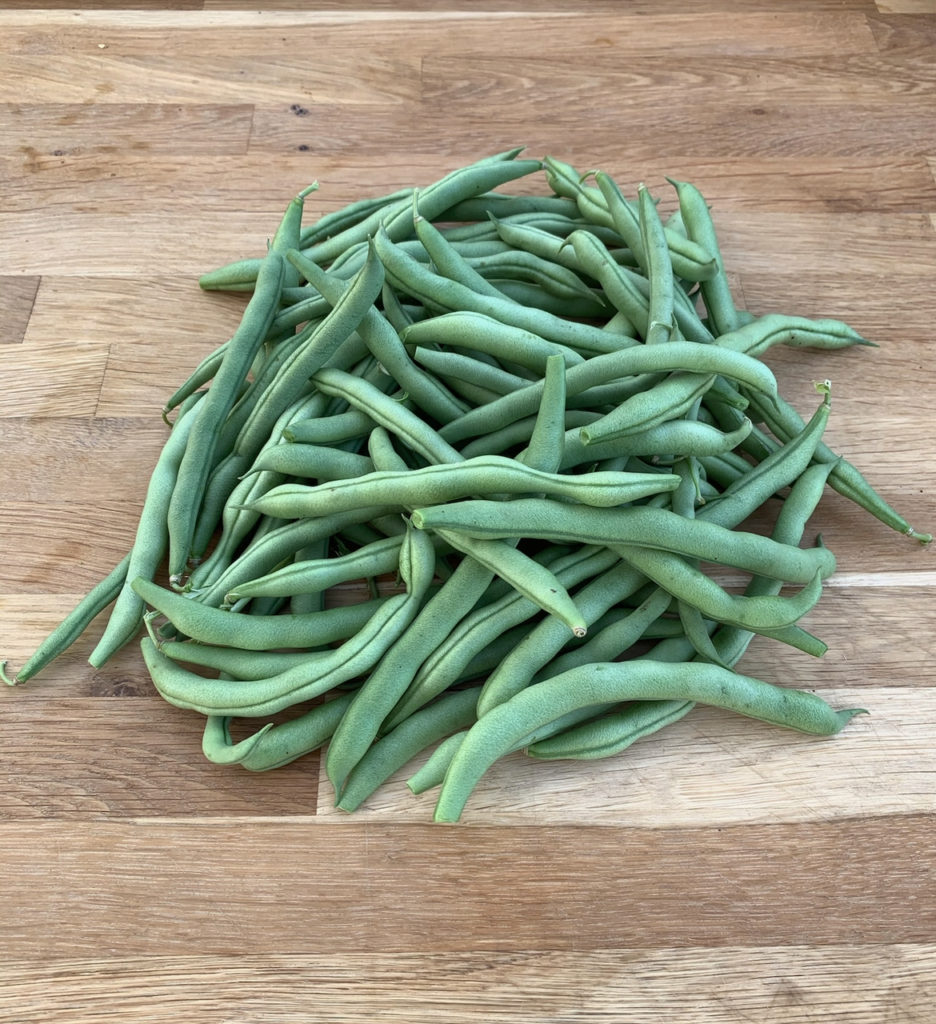
Green beans, also known as string beans or snap beans, are slender, elongated pods that are harvested when young and tender. They have a crisp and crunchy texture with a bright, fresh flavor. Green beans can range in color from vibrant green to yellow, and they are a popular vegetable used in various cuisines worldwide. Whether sautéed, steamed, roasted, or included in salads, stir-fries, or casseroles, green beans provide a satisfying and versatile addition to meals.
Green beans should be used sooner versus later. Place the unwashed green beans in a bag or a container lined with a dry paper towel to absorb excess moisture. Leave the bag slightly open or use a container with ventilation to allow for some airflow. Store the green beans in the refrigerator's crisper drawer, where they will stay fresh for up to a week. It's best to avoid washing the beans until you're ready to use them, as excess moisture can lead to spoilage.
These are Blue Lake Stringless beans. That means you only need to remove the stem end to enjoy. Rinse. Eat raw or cooked.
Freezing: Blanch the green beans by briefly boiling them in water, then transferring them to an ice bath to cool. Drain well and place the blanched beans in freezer-safe bags or containers. Label and date them before placing them in the freezer. Frozen green beans can be used in various cooked dishes such as soups, stews, and stir-fries.
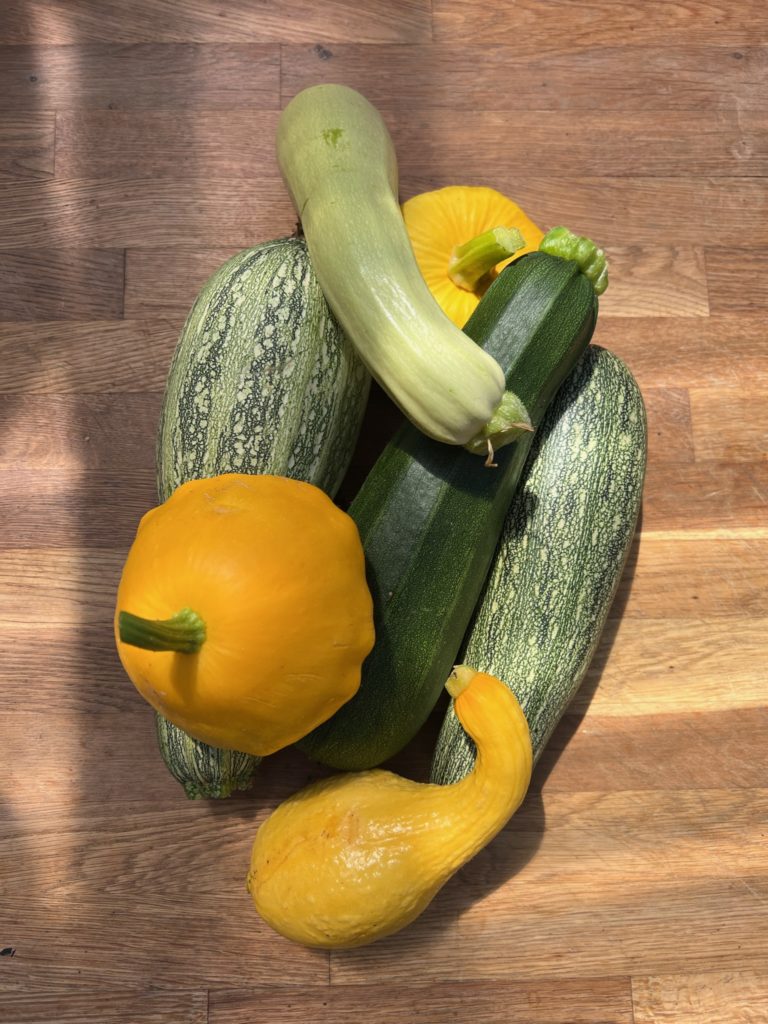
Summer squash refers to a variety of tender, edible gourds that are harvested during the summer months. They typically have a vibrant, yellow or green skin and a mild, slightly sweet flavor. Summer squash comes in various shapes, including elongated, cylindrical zucchini and round or bulbous varieties like pattypan and yellow crookneck squash. The flesh is tender and succulent, with a delicate texture that holds up well in both raw and cooked preparations.
Rinse. Eat raw or cooked.
Handle gently. The skin is thin and fragile. Keep on the counter and use within a week. If you aren't going to use them right away keep in the refrigerator.